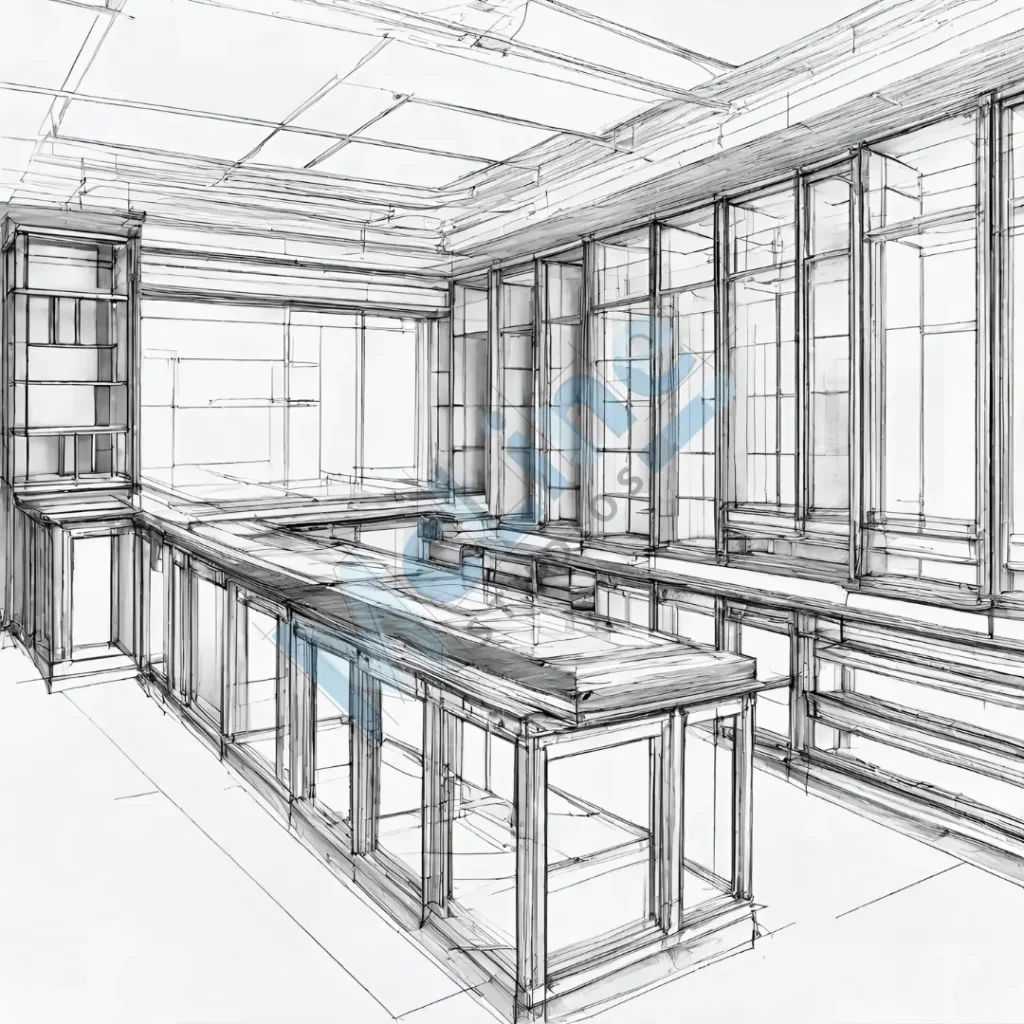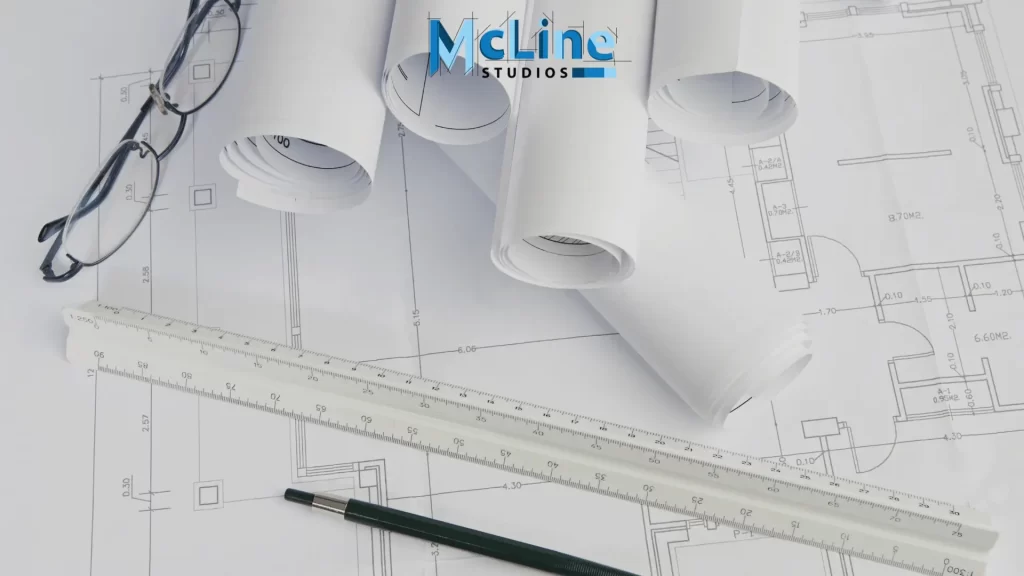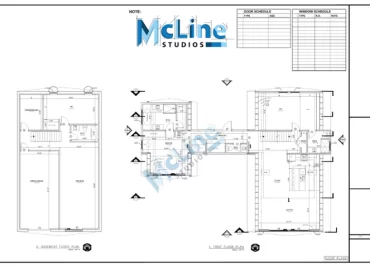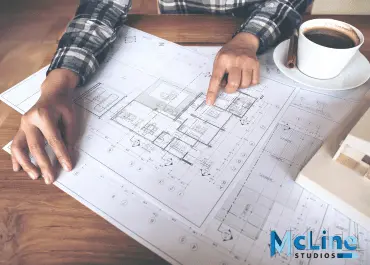Two essential components in the process of construction are Working Drawings and Shop Drawings, each playing a distinct yet interdependent role in bringing a concept to fruition. As architects, engineers, and craftsmen collaborate to transform visions into reality, understanding the nuanced differences between these two types of drawings becomes paramount.
As the backbone of architectural and engineering endeavors, Working Drawings serve as the foundational guide, encapsulating the designer’s vision with meticulous detail and technical specifications. These comprehensive documents not only convey the aesthetics but also embody the structural nuances and material specifics critical for construction.
In contrast, Shop Drawings emerge as the craftsmen’s interpretative palette, offering a granular view into the fabrication and assembly of components. This divergence prompts a fundamental question in the design and construction arena: What sets Working Drawings and Shop Drawings apart, and how do they collaborate to bring visions to life? This exploration delves into the distinct roles, purposes, and symbiotic relationship between Working Drawings and Shop Drawings, shedding light on their significance in the intricate dance between design intent and real-world execution.

What are Working Drawings?
Working drawings are detailed and precise illustrations or diagrams that convey the essential information for the construction or manufacturing of a product. These drawings serve as a comprehensive guide for architects, engineers, and other professionals involved in the execution of a project. They typically include dimensions, specifications, materials, and other technical details necessary for accurate implementation.
Working drawings are crucial in various fields, such as architecture, engineering, and manufacturing, ensuring that the final product or structure aligns with the intended design. These documents facilitate clear communication between stakeholders and play a vital role in the successful realization of projects by providing a standardized and comprehensive reference for construction or production processes.
What are Shop Drawings?
Shop drawings are detailed, scaled illustrations or diagrams created by contractors, manufacturers, or fabricators to depict specific components, materials, and dimensions for construction or manufacturing projects. These drawings serve as a bridge between design plans and actual construction, providing intricate details on how structures or products should be built.
Typically including information on materials, dimensions, fabrication methods, and installation processes, shop drawings ensure precision and alignment with project specifications. Architects and engineers review and approve these drawings to guarantee that the final product adheres to the intended design. In essence, shop drawings play a crucial role in translating conceptual designs into practical, executable instructions for construction or fabrication teams.
Differences Between Working Drawings and Shop Drawings?
Working drawings and shop drawings are both essential components in the field of architecture, engineering, and construction, but they serve different purposes and are created at different stages of the design and construction process. Here are the key differences between working drawings and shop drawings:

Purpose
– Working Drawings: Also known as construction drawings or blueprints, working drawings are created during the design development and construction documentation phases. They provide a detailed representation of the design and are used for obtaining permits, cost estimation, and guiding construction.
– Shop Drawings: Shop drawings, on the other hand, are created after the design has been finalized and construction has begun. They are detailed drawings produced by contractors, subcontractors, or fabricators to illustrate how specific components will be fabricated, assembled, and installed.
Level of Detail
– Working Drawings: These drawings focus on overall design intent, dimensions, materials, and other essential information required for construction. They provide a comprehensive view of the entire project.
– Shop Drawings: Shop drawings are more detailed and specific. They include precise measurements, materials, fabrication methods, and other details relevant to the manufacturing and installation of individual components.
Authorship
– Working Drawings: Typically prepared by architects and engineers, working drawings are part of the design documentation. They include floor plans, elevations, sections, and details necessary for construction.
– Shop Drawings: Produced by contractors, subcontractors, or fabricators, shop drawings are specific to the products or systems being manufactured or installed. These drawings are submitted to the architect or engineer for approval before production.
Review and Approval
– Working Drawings: Reviewed and approved by architects and engineers during the design and documentation phases to ensure compliance with design intent, building codes, and regulations.
– Shop Drawings: Submitted to the architect or engineer for review and approval before fabrication and installation. The focus is on ensuring that the proposed details align with the design specifications.
Scope
– Working Drawing: Encompass the entire project, including architectural, structural, mechanical, and electrical components. They provide a holistic view of the project.
– Shop Drawings: Concentrate on specific elements such as structural steel, precast concrete, curtain walls, HVAC systems, or other components that require detailed fabrication and installation information.
Hence, working drawings are comprehensive design documents used for construction purposes, while shop drawings are detailed drawings specific to individual components, produced by those responsible for fabrication and installation. Both are crucial for ensuring that the constructed project aligns with the design intent while meeting quality and safety standards.
Conclusion
In conclusion, understanding the disparities between working drawings and shop drawings is essential for ensuring seamless collaboration and precision in construction projects. While working drawings serve as the blueprint for design intent and coordination among various stakeholders, shop drawings delve into the nitty-gritty details, facilitating the actual fabrication and assembly process. Recognizing the significance of these distinctions empowers professionals to streamline their workflow and enhance overall project efficiency.
As you navigate the complexities of architectural documentation, consider partnering with McLine Studios. With a proven track record of delivering top-notch drafting services, McLine Studios stands out as a reliable partner for translating concepts into meticulous working and shop drawings. Their commitment to precision, innovation, and client satisfaction makes them a valuable asset in the realm of architectural design and construction.




